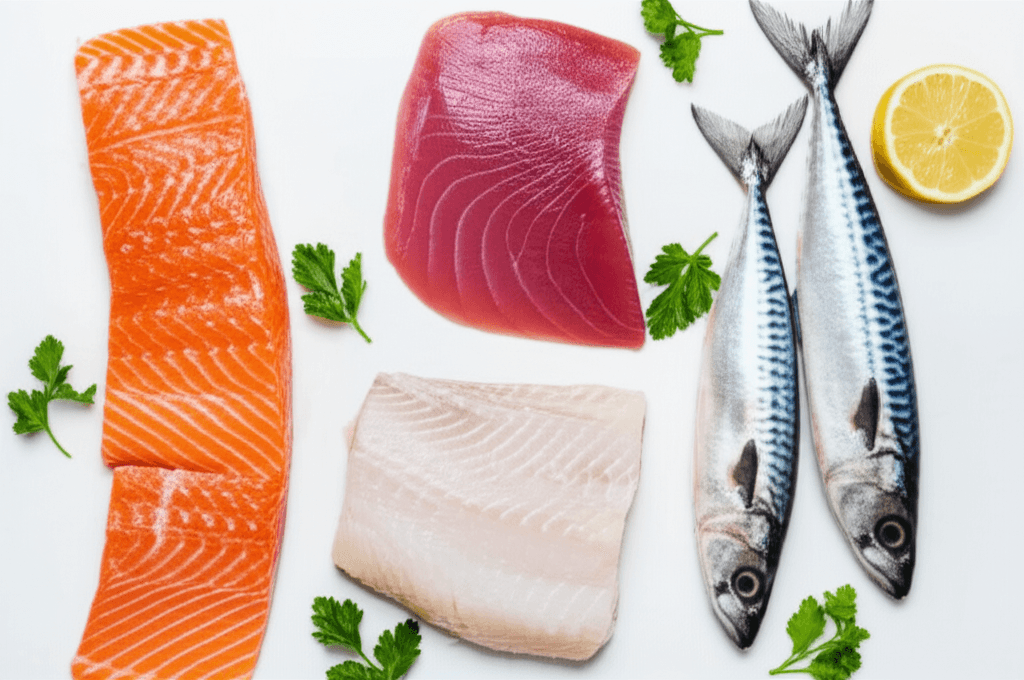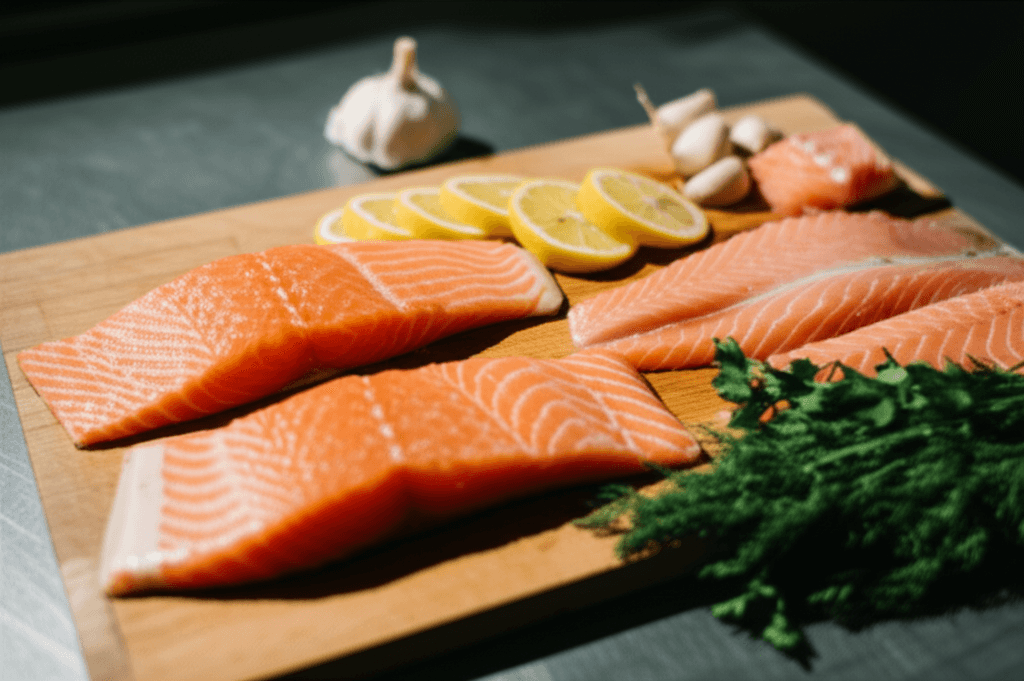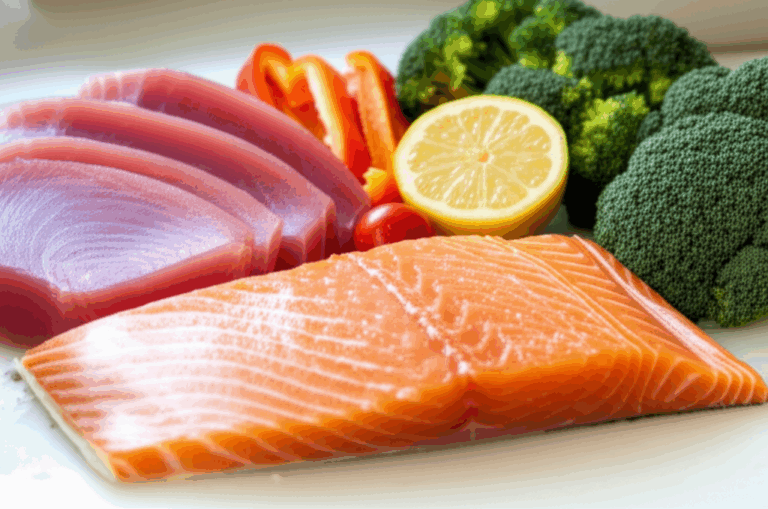Eating fish is a cornerstone of a healthy diet, celebrated for its unique blend of essential nutrients that support everything from heart and brain health to muscle repair and immune function. Yet, with a vast ocean of choices, knowing which fish offer the most benefits and the best ways to prepare them can be challenging. Nutritionists consistently highlight certain species for their exceptional nutritional profiles and lower contaminant levels.
This guide delves into the top seven healthiest fish recommended by experts and provides the best cooking methods to maximize their health advantages and delicious flavors.

Why Fish is a Nutritional Powerhouse
Fish, particularly oily varieties, are renowned for being complete proteins, meaning they provide all nine essential amino acids necessary for the body to function optimally, build muscles, and produce hormones. Beyond protein, fish are a rich source of omega-3 fatty acids, specifically EPA (eicosapentaenoic acid) and DHA (docosahexaenoic acid). These “good fats” are crucial for:
- Heart Health: Reducing blood pressure, lowering triglycerides, decreasing artery inflammation, and supporting healthy blood vessels.
- Brain Function: Enhancing cognitive function, memory, and potentially reducing the risk of cognitive decline and neurodegenerative diseases.
- Anti-inflammatory Properties: Helping to manage chronic diseases by lowering inflammation throughout the body.
- Vitamin D: Many fish, especially oily ones, are among the few natural food sources of vitamin D, vital for bone health, immune system strength, and mood regulation.
- Other Essential Nutrients: Fish also provide an array of B vitamins (especially B12), selenium, iodine, phosphorus, and potassium, all of which play critical roles in metabolism, nerve function, and overall well-being.

The 7 Healthiest Fish to Eat, According to Nutritionists
When selecting fish, nutritionists often emphasize those high in omega-3s and low in mercury.
1. Salmon
Salmon is frequently hailed as the “prom queen of fish” due to its popularity and impressive nutritional benefits. It’s an excellent source of omega-3 fatty acids, with one serving providing more than half the recommended daily amount of vitamin D, along with significant amounts of vitamin B12, selenium, and potassium. These nutrients contribute to heart health, brain function, mental well-being, muscle mass, and strong bones. Wild-caught salmon generally offers higher omega-3s and fewer contaminants, though ethically farmed options are also good.
Best Ways to Cook Salmon:
- Baked/Roasted: A simple and healthy method. Season with salt, pepper, olive oil, garlic, and lemon slices. Bake at 375-400°F (190-200°C) for 12-20 minutes, depending on thickness, until opaque and flaky. Baking in parchment paper can also help retain moisture.
- Poached: Considered one of the healthiest and quickest methods, poaching results in a tender, delicate, flaky fish and requires no added oils.
- Grilled/Pan-Seared: These methods create a crispy exterior while keeping the inside moist. Use minimal healthy oils.
2. Mackerel
Mackerel is another oily fish packed with omega-3 fatty acids, making it excellent for heart and brain health. It’s also an exceptional source of vitamin B12, vitamin D, selenium, and protein. Mackerel is considered to have low levels of mercury.
Best Ways to Cook Mackerel:
- Grilled or Baked: Like salmon, grilling or baking mackerel helps preserve its rich flavor and nutritional integrity.
- Smoked (in moderation): While delicious, smoked mackerel should be consumed mindfully due to higher nitrate content from the smoking process, which may increase cancer risk.
- Canned: Canned mackerel retains all its health benefits, including omega-3s and protein, and is a convenient, ready-to-eat option.
3. Sardines
These small, oily fish are nutritional powerhouses, dense in omega-3 fatty acids, vitamin B12, vitamin D, and calcium (especially if you eat the soft bones). Sardines contribute to heart health, bone strength, brain function, and may even help protect against type 2 diabetes. They are also low in mercury.
Best Ways to Cook Sardines:
- Canned (convenient): Often found canned in water or olive oil, sardines are already cooked and can be added cold to salads, mashed on toast, or heated through with pasta or roasted vegetables.
- Grilled or Pan-Fried (fresh): Fresh sardines can be grilled or pan-fried with lemon, herbs, and spices like paprika or cumin for a less “fishy” flavor than their canned counterparts.
- In Fishcakes or Stews: Canned sardines can be easily incorporated into fishcakes or hearty stews.
4. Herring
Herring, a silvery fish, is affordable, rich in omega-3s, and has minimal mercury content, making it a clean and safe ocean fish. It’s an excellent source of vitamin D, B12, selenium, iron, and lean protein, supporting heart health, brain development, and red blood cell formation.
Best Ways to Cook Herring:
- Baked or Grilled: Baking or grilling whole herring or fillets is a great way to enjoy its rich flavor.
- Pickled: Pickled herring is a common preparation, particularly in Scandinavian cuisine, and maintains many of its nutritional benefits.
- Pan-Fried: Often served pan-fried with potatoes and onions in some European cuisines.
5. Rainbow Trout
Rainbow trout, a member of the salmon family, is a lean, flavorful fish packed with protein, omega-3 fatty acids (EPA and DHA), vitamin D, B12, niacin, and minerals like calcium, potassium, magnesium, selenium, and phosphorus. It has a mild flavor and relatively low mercury levels.
Best Ways to Cook Rainbow Trout:
- Baked, Broiled, or Grilled: These methods highlight its mild flavor and tender, flaky texture.
- Pan-Fried or Sautéed: Quick and easy, pan-frying with a light coating or sautéing can create a delicious meal.
- Steamed: A very healthy option that retains moisture and nutrients.
6. Cod
Cod is a flaky white fish known for being a low-fat source of protein, making it an excellent choice for heart health and weight management. It’s rich in vitamin B12, niacin, phosphorus, selenium, choline, and iodine, an important mineral for thyroid function. Cod is also relatively low in mercury.
Best Ways to Cook Cod:
- Baked or Grilled: These are among the most healthful ways to cook cod, often paired with vegetables.
- Steamed: Steaming cod preserves its delicate texture and keeps it moist.
- Pan-Seared: A quick method that can give cod a nice crust.
7. Skipjack Tuna (Canned Light Tuna)
While larger tuna species can be higher in mercury, “chunk light” canned tuna, typically made from skipjack, is a lower-mercury option recommended by nutritionists. Tuna is an excellent source of protein, vitamin D, vitamin B12, iron, potassium, selenium, and omega-3 fatty acids, supporting bone health, immune function, and brain health.
Best Ways to Cook Skipjack Tuna:
- Canned (ready-to-eat): Canned skipjack tuna is incredibly versatile for quick, healthy meals. It can be added to salads, sandwiches, pasta dishes, or used in tuna melts.
- Quick Sear (fresh, in moderation): If opting for fresh skipjack, a quick sear over high heat is often all it needs. Due to varying mercury levels in fresh tuna, consumption should be limited to a few times a week, especially for women of childbearing age, pregnant or breastfeeding women, and children.

General Healthy Cooking Methods for Fish
Beyond specific fish, the cooking method itself plays a significant role in the healthfulness of your meal. Nutritionists advocate for methods that minimize added fats and preserve the delicate nutrients in fish:
- Baking/Roasting: A hands-off method that typically requires minimal added oil and can be enhanced with herbs, spices, and citrus.
- Grilling: Offers a smoky flavor and allows fats to drip away. Using marinades with lemon juice or vinegar can add flavor without excess oil.
- Poaching: Cooking fish gently in simmering liquid (water, broth, or wine) results in a very tender product and adds no extra fat.
- Steaming (including en Papillote): Steaming, especially in parchment paper or foil packets with vegetables and herbs, is excellent for retaining moisture and nutrients.
- Pan-Searing/Pan-Frying (lightly): Using a small amount of healthy oil (like olive oil) in a nonstick skillet can yield a crispy exterior.
Aim for an internal temperature of 145°F (62.8°C) in the thickest part of the fish to ensure it’s fully cooked and safe to eat.
Incorporating these nutritionist-approved fish and cooking methods into your diet can significantly boost your intake of vital nutrients, supporting long-term health and well-being. The NHS recommends eating at least two portions of fish per week, with one portion being an oily fish.







